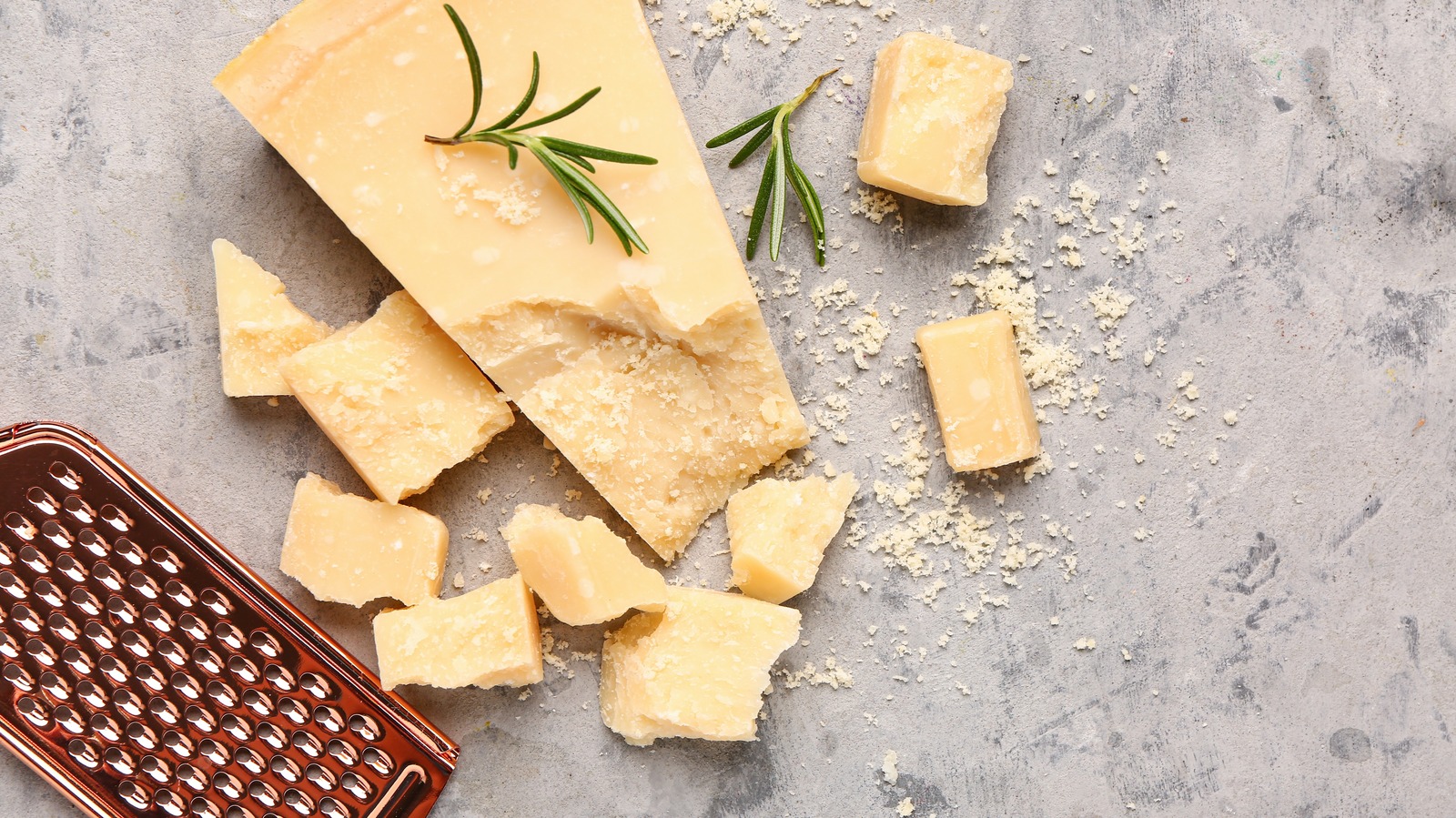Parmesan is a staple in many households (including mine!), and that crumbly savory cheese can do a lot in the kitchen; including making an that you can use for . It's best when freshly grated, but when you pull that wedge out from the refrigerator, you might notice some white spots on the cheese's flat surface. For those of you who are , it's hard not to wonder if your cheese has gone bad — but the truth is, it probably hasn't.
Those white spots are much more likely to be tyrosine or calcium lactate crystals, and it turns out, they're something not to avoid; but to cherish. That's because the presence of these crystals (also simply referred to as 'cheese crystals') are a little nod to the fact that the cheese you're about to eat has likely been well-aged. If you take a chunk of Parmesan with those specks and eat it, you'll notice a distinct textural crunch to them, which many people find adds to their enjoyment of eating it.
Those crystals aren't limited to just Parmesan either, as many hard aged cheeses can develop these crystals. What are tyrosine crystals and how do they form? In terms of Parmesan, it's most likely you're seeing tyrosine crystals in your cheese. These show up as proteins in the cheese during the cheese's long aging process.
As the cheese matures, the amino acid tyrosine is released and it clusters together; turning into those white specks. You'll mostly find these in the interior of Swiss, Romano, and Parmesan cheeses, though you can occasionally find th.


















